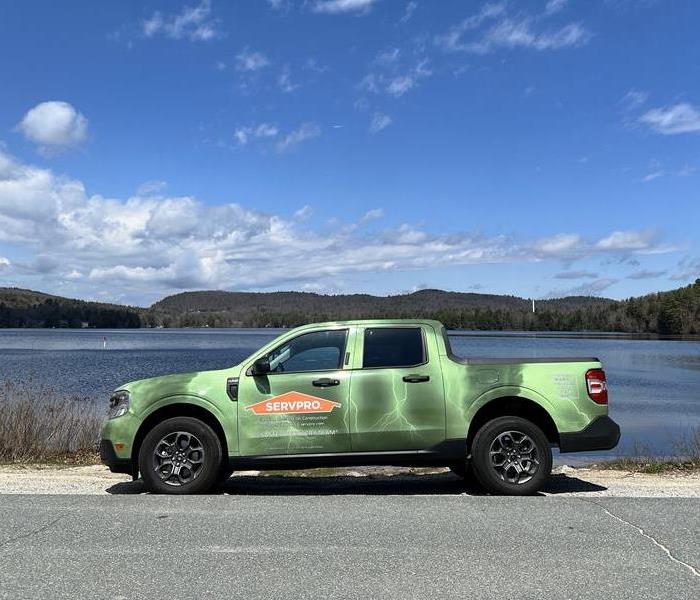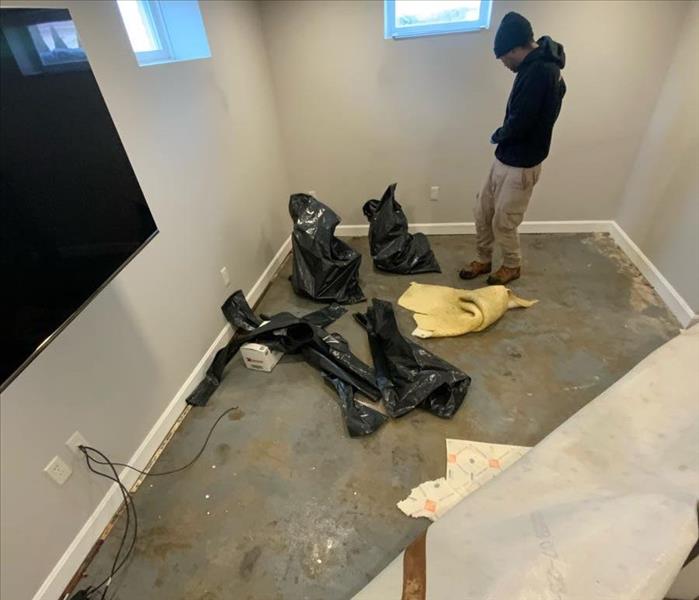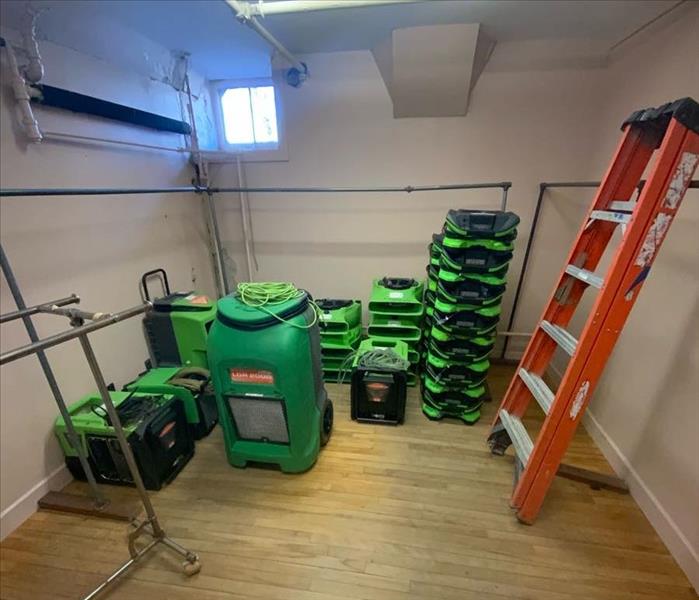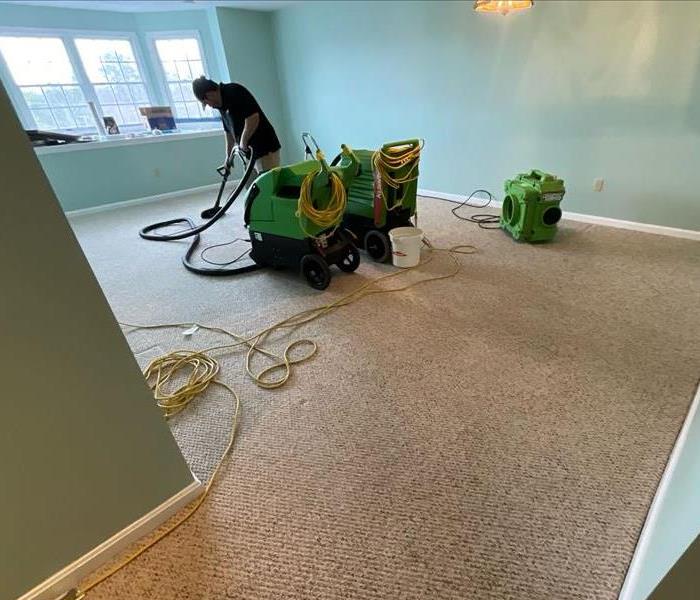SERVPRO® Extends Its Reach: Now Serving Hooksett, Raymond, Epping & Southern New Hampshire!
5/6/2024 (Permalink)
 SERVPRO is now serving Hooksett, Raymond, Epping and Southern New Hampshire with style.
SERVPRO is now serving Hooksett, Raymond, Epping and Southern New Hampshire with style.
Exciting news is on the horizon for residents of Hooksett, Raymond, Epping, and all of Southern New Hampshire! SERVPRO® is thrilled to announce the opening of our newest location, dedicated to providing top-tier restoration services to these vibrant communities.
A New Era of Service:
With our expanded presence in Hooksett, Raymond, Epping, and throughout Southern New Hampshire, we're bringing our renowned expertise, professionalism, and commitment to excellence closer to home for residents and businesses alike.
Comprehensive Restoration Solutions:
From water damage restoration to fire damage cleanup, mold remediation to storm response, our team of trained professionals is equipped to handle any restoration challenge with precision and care. No matter the size or scope of the disaster, SERVPRO is here to help you navigate the restoration process with ease.
Your Trusted Local Partner:
As members of the Hooksett, Raymond, Epping, and Southern New Hampshire communities ourselves, we understand the unique challenges and needs of our neighbors. That's why we're committed to providing personalized service and support tailored to your specific situation, ensuring that you receive the care and attention you deserve.
Available When You Need Us:
Disasters don't wait for a convenient time to strike, which is why neither do we. With our 24/7 emergency response team, you can rest easy knowing that help is just a phone call away, day or night. We'll spring into action immediately, arriving on the scene promptly to assess the situation and begin the restoration process without delay.
Contact Us Today:
So, whether you've experienced water damage, fire damage, mold growth, or any other disaster, don't hesitate to reach out to SERVPRO® of Hooksett, Raymond, Epping. We're here to help you get back on your feet and restore your peace of mind, one step at a time.
Welcome to the SERVPRO® family, Southern New Hampshire! We look forward to serving you and your community for years to come.
#SERVPRO #Hooksett #Raymond #Epping #SouthernNewHampshire #RestorationExperts
SERVPRO®'s Guide to Handling Debris and Proper Disposal After a House Fire
5/2/2024 (Permalink)
After the flames are extinguished and the smoke clears, the daunting task of debris cleanup and disposal begins. From charred belongings to structural remnants, the aftermath of a house fire can leave homeowners feeling overwhelmed and unsure of where to turn. In this blog post, we'll dive into the process of handling debris and proper disposal following a house fire, offering valuable insights and guidance from SERVPRO's experts.
Assessing the Damage: A Comprehensive Approach
- Before diving into cleanup efforts, it's crucial to assess the extent of the damage and prioritize tasks accordingly.
- SERVPRO's trained technicians conduct thorough assessments to identify salvageable items, hazardous materials, and structural issues, guiding homeowners through the debris removal process with efficiency and compassion.
Safety First: Protective Gear and Precautions
- Debris cleanup can expose homeowners to a range of hazards, including sharp objects, toxic chemicals, and unstable structures.
- SERVPRO prioritizes safety at every step, providing homeowners with appropriate protective gear, implementing safety protocols, and offering guidance on safe handling and disposal practices.
Sorting Through the Rubble: Salvage, Donate, Discard
- As homeowners sift through the debris, they'll encounter a mix of salvageable items, sentimental belongings, and irreparable damage.
- SERVPRO assists homeowners in sorting through the rubble, identifying items that can be salvaged, coordinating donations for reusable goods, and disposing of hazardous materials in accordance with local regulations.
Environmental Responsibility: Eco-Friendly Disposal Practices
- Proper disposal of fire debris is not only essential for safety but also for environmental responsibility.
- SERVPRO prioritizes eco-friendly disposal practices, recycling materials whenever possible, and disposing of hazardous waste in accordance with environmental regulations to minimize the impact on the planet.
Rebuilding and Recovery: Moving Forward with Confidence
- While the debris cleanup process may feel daunting, it's an essential step toward rebuilding and recovery.
- SERVPRO's comprehensive restoration services go beyond debris cleanup, offering homeowners support and guidance throughout the rebuilding process to restore their homes to their former glory.
In the aftermath of a house fire, the process of debris cleanup and proper disposal can feel overwhelming. However, with SERVPRO's expertise and support, homeowners can navigate this challenging time with confidence and peace of mind. From assessing the damage to sorting through the rubble and rebuilding, SERVPRO is here to provide compassionate guidance and comprehensive restoration services every step of the way.
Why you should remove your carpet and baseboards after your finished basement floods.
4/1/2024 (Permalink)
 Removing the carpet in a Raymond basement.
Removing the carpet in a Raymond basement.
There are several compelling reasons why SERVPRO® might recommend removing carpet and baseboards after a basement flood:
Water Contamination: Floodwater often contains contaminants such as sewage, bacteria, and chemicals. Carpets and baseboards can absorb and trap these contaminants, posing health risks to occupants. Removing contaminated materials is essential to safeguarding the health and safety of individuals in the home.
Prevention of Mold Growth: Carpets and baseboards can retain moisture for extended periods, creating an ideal environment for mold growth. Mold can proliferate rapidly in damp conditions, leading to extensive damage and potential health hazards. Removing water-damaged materials promptly helps mitigate the risk of mold growth and prevents further contamination of the indoor environment.
Structural Integrity: Floodwater can saturate carpets and seep into baseboards, causing structural damage to underlying materials such as subflooring and drywall. Over time, prolonged exposure to moisture can compromise the structural integrity of the basement, leading to warping, rotting, and decay. Removing water-damaged carpets and baseboards allows for thorough drying and assessment of structural components, helping to prevent long-term damage.
Odor Removal: Floodwater can leave behind unpleasant odors that permeate carpets and baseboards. Even after drying, these odors may linger, affecting the indoor air quality and comfort of the home. Removing water-damaged materials helps eliminate odor sources and facilitates effective deodorization of the space, restoring a fresh and clean environment.
Efficient Drying: Carpets and baseboards can impede the drying process by trapping moisture and preventing airflow. Removing these materials allows for more efficient drying of the affected area, reducing the risk of secondary damage such as mold growth and structural deterioration. With proper ventilation and dehumidification, SERVPRO® can expedite the drying process and restore the basement to a safe and habitable condition.
In summary, removing carpets and baseboards after a basement flood is essential for mitigating health risks, preventing mold growth, preserving structural integrity, eliminating odors, and facilitating efficient drying. SERVPRO® understands the importance of swift and thorough mitigation measures in flood situations and recommends removal of water-damaged materials to ensure the safety and well-being of homeowners.
How proper dryout processes can save your hardwood floors.
4/1/2024 (Permalink)
 Beautifully preserved floors following a basement water event.
Beautifully preserved floors following a basement water event.
Proper dryout processes are crucial for saving hardwood floors after water damage. Here's how:
Swift Action: Promptly addressing water damage is essential to prevent irreversible harm to hardwood floors. The longer water sits on the surface, the greater the risk of warping, buckling, and mold growth. SERVPRO® responds quickly to water damage emergencies, implementing effective drying techniques to salvage hardwood floors.
Assessment: Upon arrival, SERVPRO technicians assess the extent of water damage to the hardwood floors. They identify the type of water involved (clean, gray, or black), the severity of the damage, and the best course of action for restoration.
Water Extraction: Using specialized equipment such as powerful pumps and wet/dry vacuums, SERVPRO extracts standing water from the hardwood floors. This step is crucial for preventing further absorption of water and minimizing damage to the wood.
Moisture Detection: SERVPRO technicians use moisture detection tools to determine the moisture levels within the hardwood floors and subflooring. This allows them to identify areas that require targeted drying and ensure thorough moisture removal.
Drying Equipment: SERVPRO utilizes advanced drying equipment, including air movers and dehumidifiers, to facilitate the drying process. Air movers generate airflow across the surface of the hardwood floors, while dehumidifiers remove excess moisture from the air, speeding up evaporation and drying.
Specialized Techniques: SERVPRO employs specialized drying techniques tailored to hardwood floors, such as tenting and directed airflow. These techniques help ensure even drying and prevent damage to the wood, minimizing the risk of warping or cupping.
Monitoring and Adjustments: Throughout the drying process, SERVPRO monitors moisture levels closely and makes adjustments as needed. This may involve repositioning drying equipment, adjusting temperature and humidity levels, and conducting regular inspections to assess progress.
Surface Restoration: Once the hardwood floors are thoroughly dried, SERVPRO technicians assess any remaining damage and determine the best approach for restoration. This may involve sanding, refinishing, or replacing damaged boards to restore the floors to their preloss condition.
By following proper dryout processes, SERVPRO can effectively save hardwood floors from water damage, preserving their beauty, durability, and value. With swift action, advanced equipment, and specialized expertise, SERVPRO helps homeowners mitigate damage and restore their hardwood floors to their original state.
SERVPRO®'s portable extractors
4/1/2024 (Permalink)
 Flooded apartment complex in the Greater Raymond Area.
Flooded apartment complex in the Greater Raymond Area.
SERVPRO® utilizes portable extractors as essential equipment in its water damage restoration process. These portable extractors are powerful, versatile machines designed to efficiently remove water from various surfaces, including carpets, upholstery, and hard floors. Here are some key features and benefits of SERVPRO®'s portable extractors:
Portability: As the name suggests, portable extractors are designed to be easily transported to different locations within a property, making them ideal for water extraction in hard-to-reach areas such as basements, crawl spaces, and multi-story buildings. This portability allows SERVPRO technicians to quickly respond to water damage emergencies and extract water from affected areas without delay.
Powerful Suction: SERVPRO's portable extractors are equipped with powerful suction capabilities, enabling them to effectively remove water from carpets, rugs, upholstery, and other surfaces. The high-powered vacuum system efficiently extracts water and moisture, helping to expedite the drying process and prevent secondary damage such as mold growth and structural deterioration.
Versatility: Portable extractors come with a variety of attachments and accessories that allow for versatile use in different situations. For example, carpet wands are used for extracting water from carpets and rugs, while upholstery tools are designed for extracting water from furniture and upholstery. This versatility enables SERVPRO technicians to adapt to the specific needs of each water damage restoration project and achieve optimal results.
Dual Functionality: Many of SERVPRO's portable extractors offer dual functionality, allowing them to perform both water extraction and carpet cleaning tasks. This dual functionality streamlines the restoration process by combining multiple steps into one, saving time and labor costs while delivering exceptional cleaning and restoration results.
Efficient Water Removal: Portable extractors are equipped with large capacity tanks for collecting extracted water, minimizing the need for frequent emptying and maximizing productivity. The efficient water removal capabilities of SERVPRO's portable extractors ensure thorough extraction of water from affected surfaces, helping to prevent residual moisture and potential damage.
Advanced Technology: SERVPRO continuously invests in advanced technology and equipment to enhance its water damage restoration services. Portable extractors are equipped with innovative features such as adjustable pressure settings, HEPA filtration systems, and automatic pump-out options, ensuring superior performance and reliability in every restoration project.
Overall, SERVPRO's portable extractors play a crucial role in its water damage restoration process, providing powerful, versatile, and efficient water extraction capabilities that help restore properties quickly and effectively. With advanced technology, versatile functionality, and expert technicians, SERVPRO delivers exceptional results in every water damage restoration project.

 24/7 Emergency Service
24/7 Emergency Service



